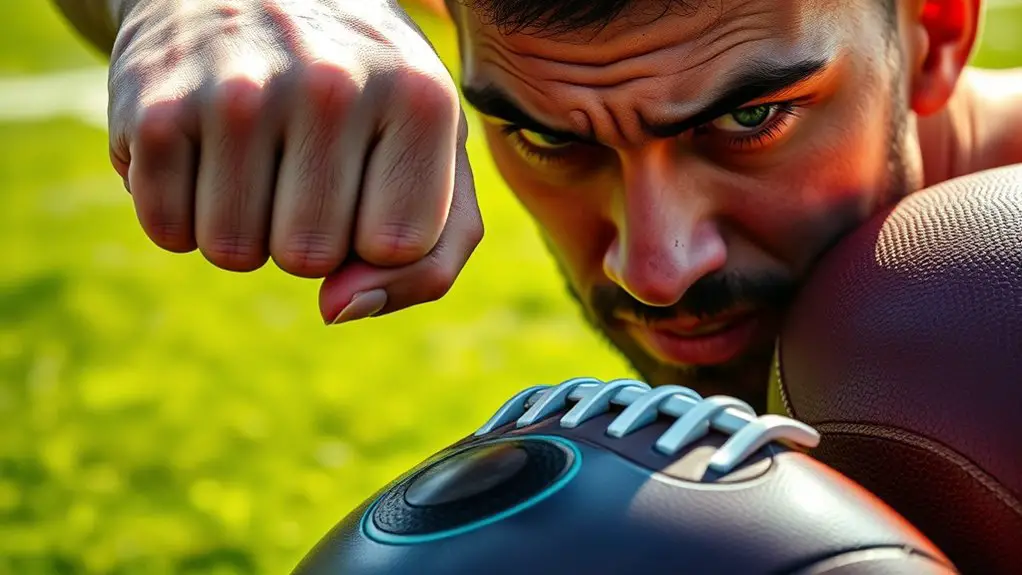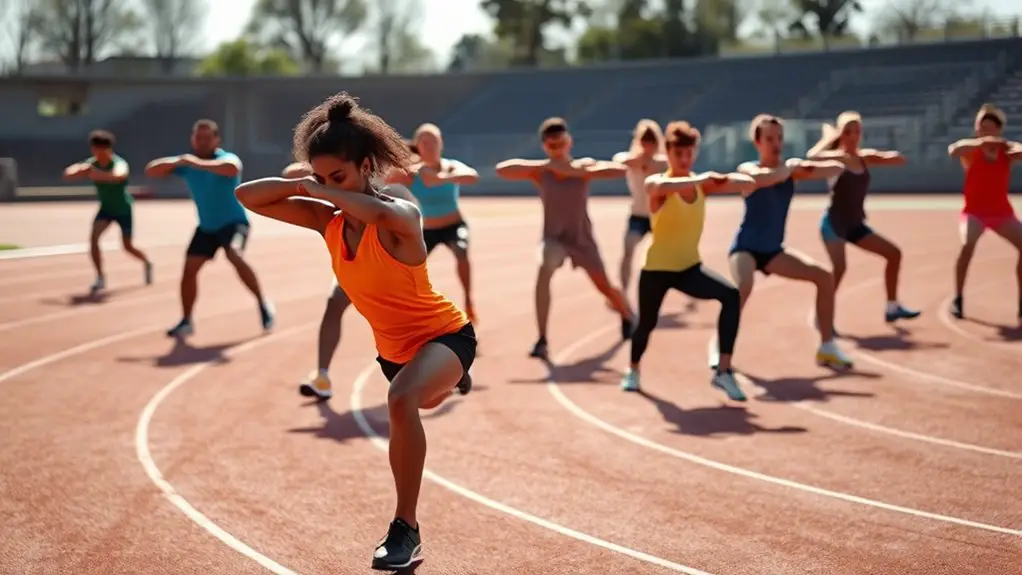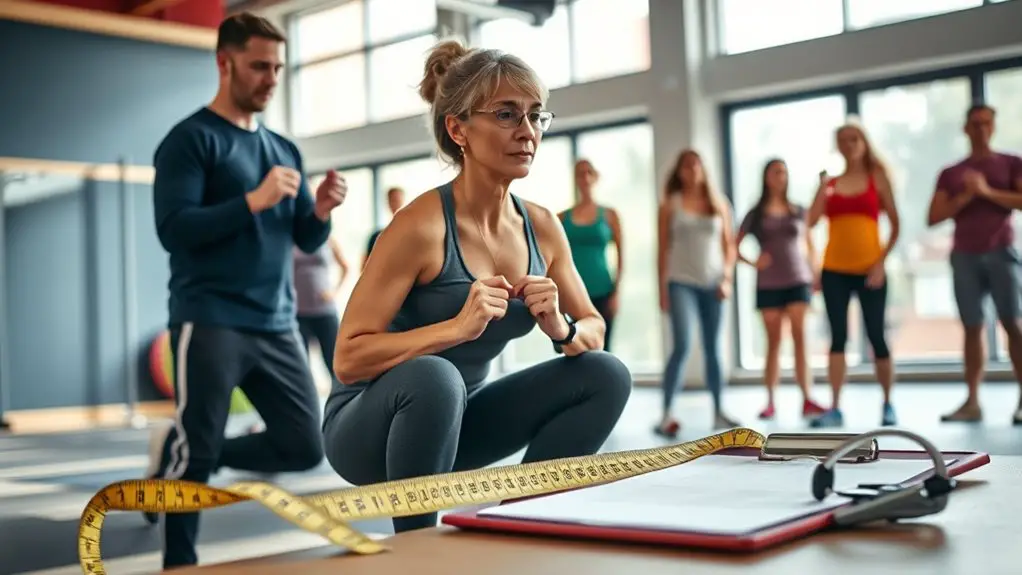Grip strength matters for football players because it directly impacts your performance and injury prevention. A strong grip enhances ball control, improves tackling, and boosts passing accuracy. It helps you fend off opponents during plays and maintain stability during quick movements. By integrating grip strength training into your routine, you not only improve your game but also reduce the risk of injuries. There's more to discover about how grip strength can elevate your football skills and overall performance.
The Importance of Grip Strength in Football
While it might seem that speed and agility are the primary attributes for success on the football field, grip strength plays an essential role that shouldn't be overlooked. You might not realize it, but your grip strength can considerably impact your ball control. When you're battling for possession or trying to maintain control during a tackle, a strong grip allows you to secure the ball better and fend off defenders.
Imagine catching a pass with confidence, knowing your grip's solid enough to keep it from slipping away. This strength also aids in executing precise throws, ensuring the ball lands exactly where you intend. Without adequate grip strength, those quick movements and agile plays can falter, leaving you vulnerable. Additionally, improving your grip strength enhances overall health and physical fitness, which can contribute positively to your performance on the field. So, while you work on your speed and agility, don't forget to incorporate grip strength training into your routine. It's a game-changer that can elevate your performance on the field.
Key Skills Enhanced by Grip Strength
Grip strength doesn't just help with ball control; it enhances several key skills that can make a significant difference in your performance. When you master grip techniques, you'll notice an improvement in your ability to tackle and fend off opponents. Stronger grip allows for better control of the ball, which is essential during tight plays or when maneuvering through defenses.
Moreover, it contributes to your overall stability and balance, enabling you to maintain control while executing quick turns and sudden stops. This stability can also prevent injuries, allowing you to play freely without the fear of losing your grip in pivotal moments. Additionally, developing grip strength through specific exercises can significantly enhance your performance on the field.
In addition, grip strength can enhance your passing accuracy; the firmer your hold, the better your precision. So, focusing on developing your grip isn't just about strength; it's about elevating your game and achieving that freedom to play your best.
Effective Exercises to Improve Grip Strength
To boost your grip strength effectively, incorporate a variety of targeted exercises into your training routine. These exercises will not only enhance your performance but also give you the freedom to dominate on the field. Here's a quick guide to some effective grip techniques using different grip tools:
| Exercise | Grip Tool | Reps/Duration |
|---|---|---|
| Farmer's Walk | Dumbbells/Kettlebells | 30 seconds |
| Plate Pinch | Weight Plates | 20-30 seconds |
| Towel Twist | Towel | 10-15 twists |
| Wrist Roller | Wrist Roller | 2-3 sets |
| Dead Hangs | Pull-up Bar | 30 seconds |
Incorporating exercises that enhance grip strength not only improves your performance but also contributes to overall body control and stability.
How Grip Strength Affects Injury Prevention
Building grip strength through targeted exercises not only enhances your performance on the field but also plays a significant role in injury prevention. When you develop stronger hands, you improve hand stability, which can help you control the ball better and maintain your balance during intense plays. This stability reduces the likelihood of awkward falls or impacts that could lead to injuries.
Moreover, a robust grip contributes to overall injury resilience. As your grip strength improves, you'll find it easier to engage in tackles and withstand opponents' pressure without compromising your body's integrity. Stronger hands can also help prevent common injuries associated with grip, like wrist sprains.
Integrating Grip Strength Training Into Your Routine
While many athletes focus on traditional strength training, incorporating grip strength exercises into your routine can substantially enhance your overall performance. You don't have to overhaul your workout; just integrate specific grip strength tools like hand grippers, resistance bands, or even a simple towel twist.
Try dedicating a few minutes at the end of your workouts to these exercises, aiming for a training frequency of two to three times a week. This way, you'll develop stronger hands and forearms without sacrificing time.
You'll find that improved grip strength not only benefits your ball handling but also gives you a competitive edge when tackling opponents. Additionally, enhancing your grip strength can lead to better overall strength and performance in various sports. Don't underestimate the power of a firm grip; it's a game-changer. As you embrace these exercises, you're not just building muscle, you're gaining freedom on the field, enhancing your ability to perform athletic feats with confidence.
Frequently Asked Questions
What Equipment Is Best for Grip Strength Training?
When it comes to grip strength training, you've got some great options. Hand grippers are fantastic for isolating and building strength in your fingers and hands, while resistance bands offer versatility for dynamic exercises that can engage multiple muscle groups. You can easily incorporate both into your routine, giving you the freedom to train wherever you want. Just remember to start with the right resistance level and gradually increase as you progress!
How Does Grip Strength Vary by Position in Football?
You've probably noticed how different positions on the field require unique skills. When it comes to grip strength, quarterbacks need a precise grip for accurate throws, while linemen rely on sheer power to fend off opponents. You'll find quarterbacks focusing on wrist and finger strength, while linemen prioritize overall grip power to control the line of scrimmage. Each position's demands shape their grip strength, highlighting the freedom of tailored training for peak performance.
Can Grip Strength Impact Throwing Distance?
Yes, grip strength can definitely impact throwing distance. When you've got strong grip mechanics, it helps you maintain better control over the ball during your throwing technique. A firm grip allows for a more powerful release, translating into greater distance. You'll notice that players with superior grip strength often achieve better throws. So, if you want to enhance your game, focusing on grip strength could be a game-changer for your performance.
What Are Common Grip Strength Testing Methods?
When you're looking to assess grip strength, there are a couple of common methods you might consider. Dynamometer testing's a popular choice, as it measures the maximum force you can exert with your hand. Another method is the pinch grip test, which evaluates your ability to grip between your thumb and fingers. Both methods provide valuable insights into your grip strength, giving you the freedom to tailor your training accordingly.
How Long Does It Take to Improve Grip Strength?
If you've ever watched someone increase their grip strength in just weeks, you know it's possible. With consistent grip training, you can see noticeable strength progression in as little as four to six weeks. It's all about commitment and the right exercises, like using hand grippers or dead hangs. So, if you're dedicated, you'll soon feel the difference, giving you that freedom to excel in activities you love. Keep pushing, and you'll amaze yourself!




